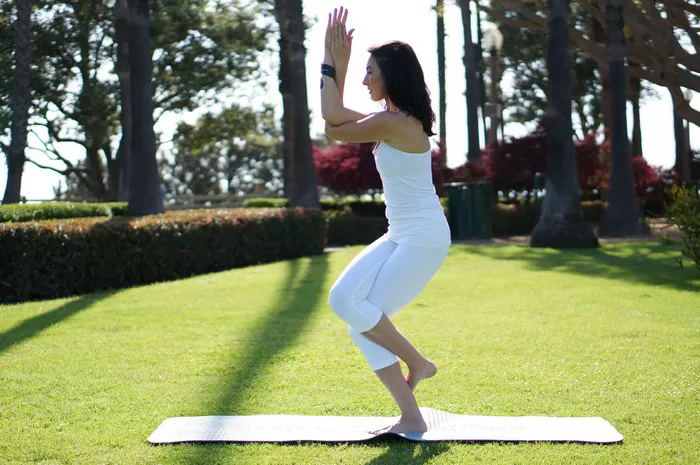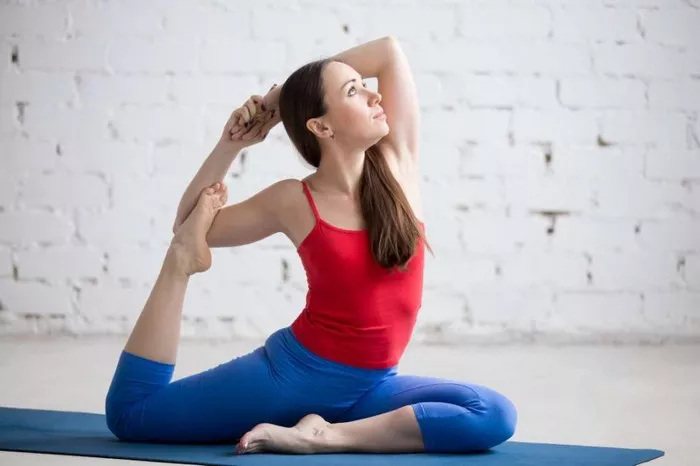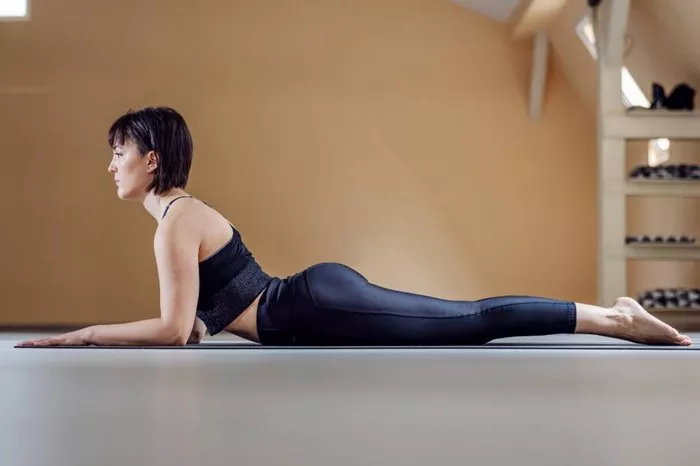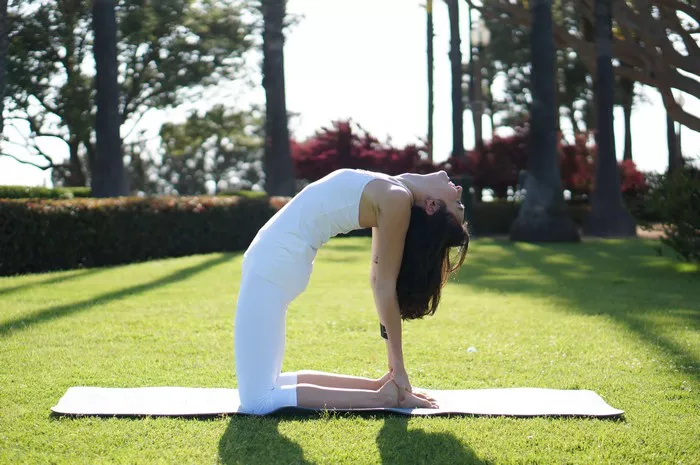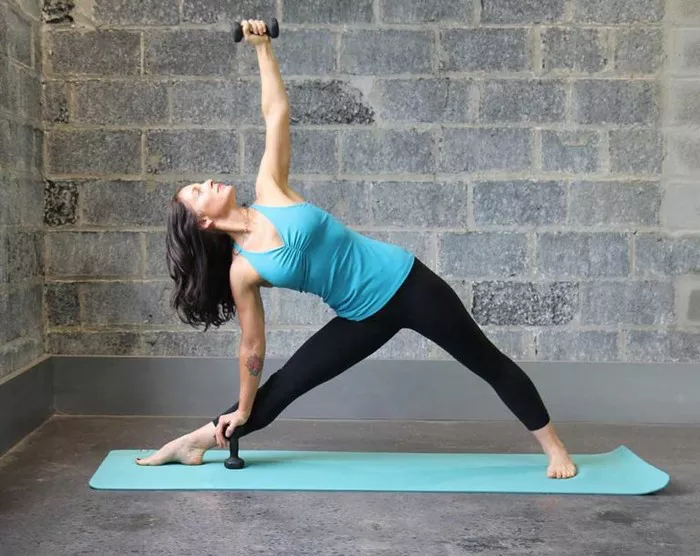One-legged yoga poses, also known as balancing poses, offer a plethora of benefits that extend beyond physical prowess. As practitioners delve into these poses, they not only enhance their balance but also fortify core and leg strength while honing mental focus. Yet, these poses demand mindfulness, proper alignment, and engaged muscles to prevent injuries and fully reap their rewards.
Benefits of One-Legged Yoga Poses:
Balancing poses are not merely about standing on one leg; they are about cultivating stability and concentration. By integrating them into your yoga practice, you can expect several advantages:
- Improved Balance: Balancing on one leg challenges proprioception and coordination, leading to enhanced overall balance.
- Strengthened Core: These poses require the engagement of core muscles to maintain stability, thereby fortifying abdominal muscles and improving posture.
- Enhanced Leg Strength: One-legged poses target leg muscles, including quadriceps, hamstrings, and calf muscles, fostering strength and endurance.
- Heightened Focus: The concentration required to sustain balance in these poses cultivates mental focus and mindfulness, fostering a deeper mind-body connection.
Importance of Proper Alignment and Engagement:
While the benefits of one-legged yoga poses are plentiful, it’s crucial to prioritize proper alignment and muscle engagement to prevent injury and maximize efficacy. Without correct alignment, practitioners risk strain or imbalance in muscles and joints. Engaging the relevant muscle groups not only aids in stability but also promotes a safer and more effective practice.
The 8 Yoga Poses:
Here are eight foundational one-legged yoga poses along with clear instructions, modifications, variations, common challenges, and tips to master each pose:
1. Tree Pose (Vrksasana):
Instructions:
- Begin in Mountain Pose (Tadasana), grounding through both feet.
- Shift weight onto the left foot, and lift the right foot, placing the sole against the inner left thigh or calf, avoiding contact with the knee.
- Press the foot into the thigh or calf while maintaining a tall spine.
- Bring hands to prayer position at the heart center or extend them overhead.
- Hold for several breaths, then switch sides.
Modifications and Variations:
- Place the foot on the inner ankle for stability.
- Utilize a wall or chair for support if balance is challenging.
- Explore different arm variations, such as extending them overhead or out to the sides.
Common Challenges and Tips:
- Keep the standing leg strong and engaged.
- Find a focal point to help maintain balance.
- Focus on lengthening the spine to avoid rounding the back.
2. Warrior III (Virabhadrasana III):
Instructions:
- Begin in Mountain Pose (Tadasana).
- Shift weight onto the left foot, hinging at the hips to extend the right leg back while simultaneously lowering the torso until it is parallel to the floor.
- Extend the arms forward or alongside the body, palms facing inward.
- Keep the hips level and facing the ground.
- Hold for several breaths, then switch sides.
Modifications and Variations:
- Use a block under the hands for support.
- Bend the standing leg slightly to increase stability.
- Experiment with different arm variations, such as clasping the hands behind the back or extending them overhead.
Common Challenges and Tips:
- Focus on keeping the hips square and level.
- Engage the core to maintain stability.
- Keep the gaze steady to aid in balance.
3. Half Moon Pose (Ardha Chandrasana):
Instructions:
- Begin in Triangle Pose (Trikonasana), with the left foot forward.
- Shift weight onto the left foot, and begin to lift the right leg while simultaneously extending the left arm down towards the floor.
- Stack the right hip over the left hip and open the torso towards the side.
- Extend the right arm towards the sky, creating a straight line from fingertips to toes.
- Hold for several breaths, then switch sides.
Modifications and Variations:
- Utilize a block under the bottom hand for support.
- Place the lifted foot on a block or against a wall for stability.
- Keep a micro-bend in the standing leg to avoid hyperextension.
Common Challenges and Tips:
- Keep the standing leg strong and engaged.
- Engage the core to support the lifted leg.
- Use a focal point to aid in balance and concentration.
4. Eagle Pose (Garudasana):
Instructions:
- Begin in Mountain Pose (Tadasana).
- Shift weight onto the left foot, and cross the right thigh over the left thigh.
- Hook the right foot behind the left calf if possible.
- Extend the arms forward, then cross the right arm under the left arm, bending at the elbows.
- Press the palms together and lift the elbows, bringing them in line with the shoulders.
- Hold for several breaths, then switch sides.
Modifications and Variations:
- Keep the toes of the lifted foot on the ground for balance.
- Use a strap to connect the hands if reaching the palms together is challenging.
- Focus on the upper body and omit the leg wrap if necessary.
Common Challenges and Tips:
- Keep the shoulders relaxed away from the ears.
- Engage the core to maintain stability.
- Find a steady focal point to aid in balance.
5. Standing Hand to Big Toe Pose (Utthita Hasta Padangusthasana):
Instructions:
- Begin in Mountain Pose (Tadasana).
- Shift weight onto the left foot and bring the right knee towards the chest.
- Reach the right hand to grasp the right big toe, extending the leg forward.
- Straighten the leg as much as possible while maintaining balance.
- Keep the left hand on the hip or extend it out to the side for balance.
- Hold for several breaths, then switch sides.
Modifications and Variations:
- Use a strap around the lifted foot if unable to reach the toe.
- Keep a micro-bend in the standing leg for stability.
- Explore different arm variations, such as extending both arms overhead or out to the sides.
Common Challenges and Tips:
- Engage the core to maintain stability.
- Keep the standing leg strong and engaged.
- Find a focal point to aid in balance and concentration.
6. Extended Hand-to-Big-Toe Pose (Utthita Hasta Padangusthasana II):
Instructions:
- Begin in Mountain Pose (Tadasana).
- Shift weight onto the left foot and bring the right knee towards the chest.
- Reach the right hand to grasp the right big toe, extending the leg to the side.
- Straighten the leg as much as possible while maintaining balance.
- Extend the left arm out to the side for balance.
- Hold for several breaths, then switch sides.
Modifications and Variations:
- Use a strap around the lifted foot if unable to reach the toe.
- Keep a micro-bend in the standing leg for stability.
- Experiment with different arm variations, such as extending both arms overhead or bringing the left hand to the hip.
Common Challenges and Tips:
- Engage the core to maintain stability.
- Keep the standing leg strong and engaged.
- Find a focal point to aid in balance and concentration.
7. Standing Split Pose (Urdhva Prasarita Eka Padasana):
Instructions:
- Begin in Mountain Pose (Tadasana).
- Shift weight onto the left foot and begin to lift the right leg towards the sky.
- Fold forward at the hips, bringing the torso towards the left thigh.
- Keep the hips squared towards the ground.
- Use the hands for support on the ground or on blocks.
- Hold for several breaths, then switch sides.
Modifications and Variations:
- Keep a micro-bend in the standing leg for stability.
- Utilize blocks under the hands for support.
- Experiment with different arm variations, such as extending both arms overhead or out to the sides.
Common Challenges and Tips:
- Engage the core to maintain stability.
- Keep the hips squared towards the ground.
- Find a focal point to aid in balance and concentration.
8. Standing Bow Pose (Dandayamana Dhanurasana):
Instructions:
- Begin in Mountain Pose (Tadasana).
- Shift weight onto the left foot and bend the right knee, reaching the right hand back to grasp the inside of the right foot or ankle.
- Extend the left arm forward, parallel to the ground.
- Begin to kick the right foot into the hand, simultaneously lifting the left arm and chest towards the sky.
- Keep the hips squared towards the ground.
- Hold for several breaths, then switch sides.
Modifications and Variations:
- Use a strap around the lifted foot if unable to reach.
- Keep a micro-bend in the standing leg for stability.
- Focus on the upper body and omit the leg extension if necessary.
Common Challenges and Tips:
- Engage the core to maintain stability.
- Keep the standing leg strong and engaged.
- Find a focal point to aid in balance and concentration.
Sequencing and Practice Tips:
Incorporating one-legged yoga poses into your practice can enhance balance, strength, and focus. Here are some tips for integrating these poses into a well-rounded sequence:
1. Begin with a gentle warm-up to prepare the body for balancing poses, focusing on mobilizing the joints and activating core muscles.
2. Progress gradually from simpler poses to more challenging ones, allowing time to build strength and stability.
3. Use props such as blocks, straps, or a wall for support and modification, especially if balance is a challenge.
4. Practice mindfulness throughout, paying attention to alignment, breath, and sensation in the body.
5. Listen to your body and respect its limits, avoiding pushing into discomfort or strain.
Conclusion
Mastering one-legged yoga poses offers a pathway to physical and mental transformation. By incorporating these poses into your practice with mindfulness, proper alignment, and engaged muscles, you can unlock a myriad of benefits including improved balance, core strength, leg strength, and focus. Each pose presents its own set of challenges and variations, providing ample opportunity for growth and exploration on your yoga journey.

